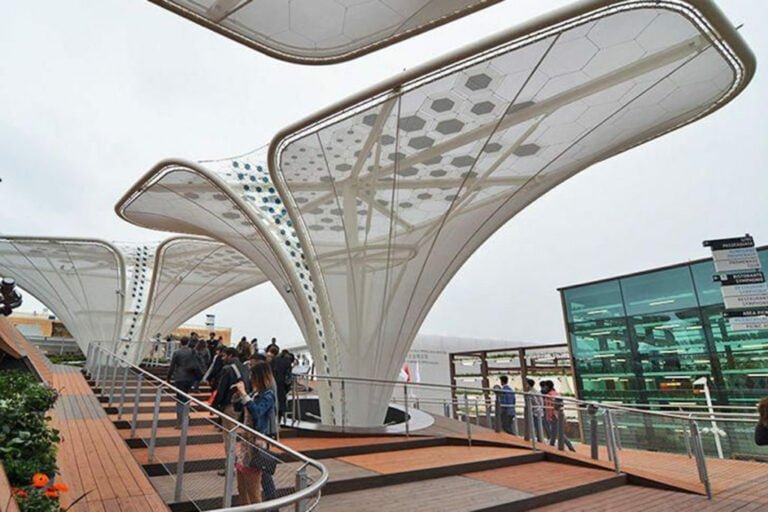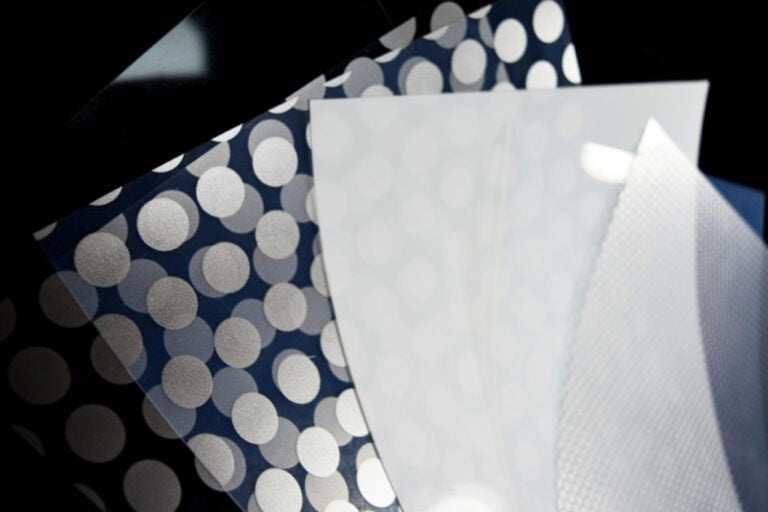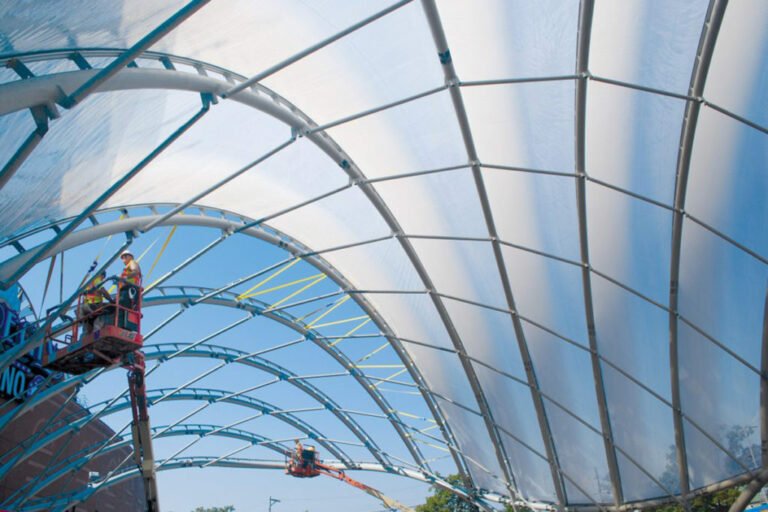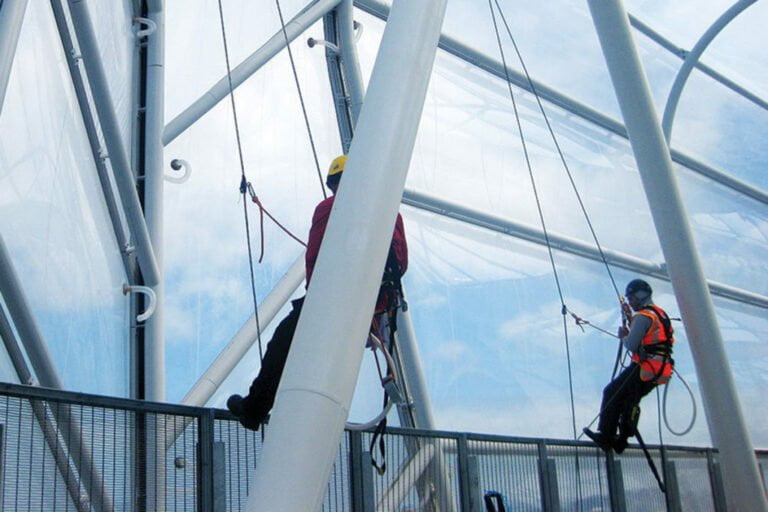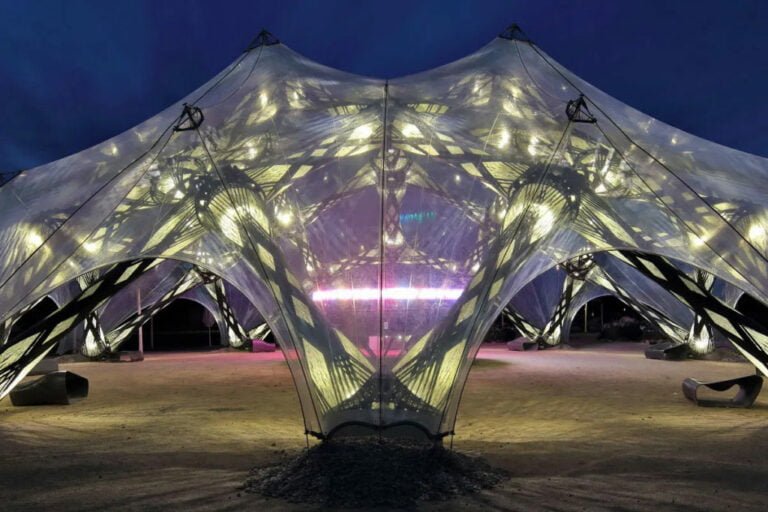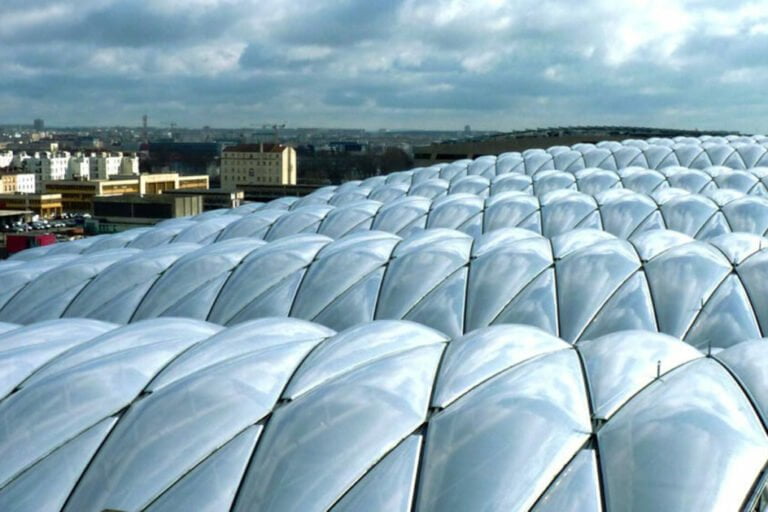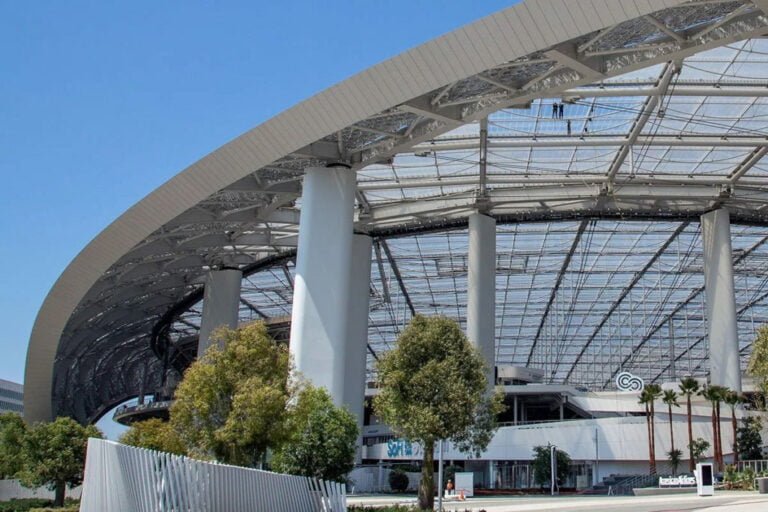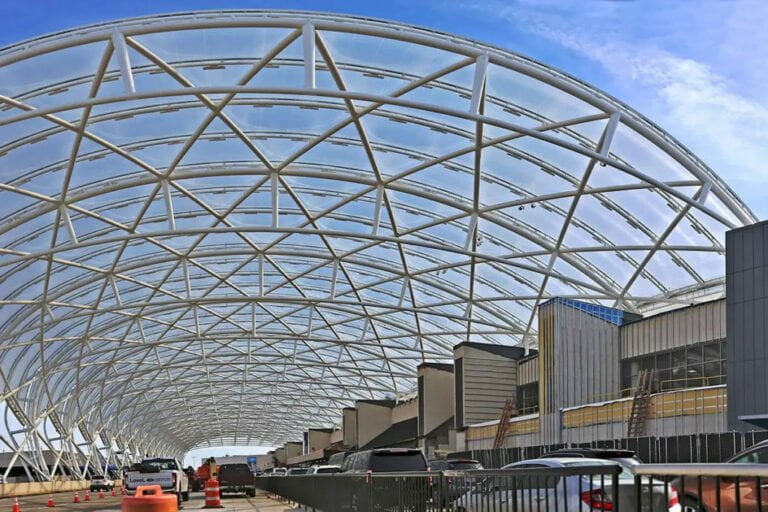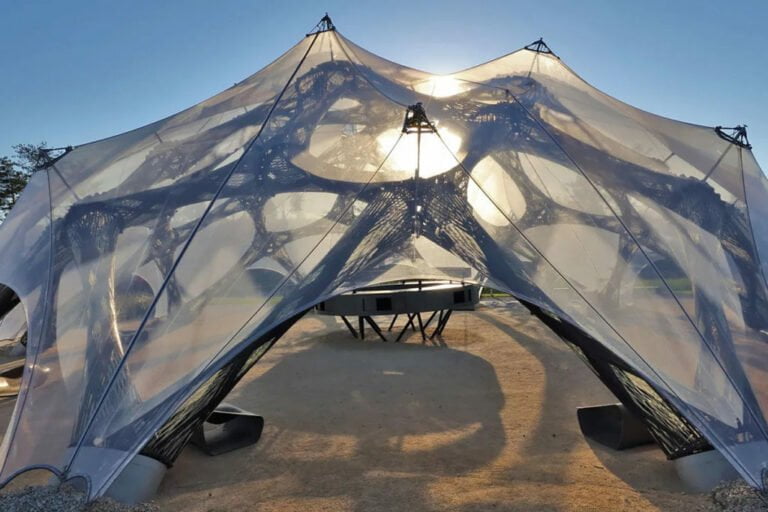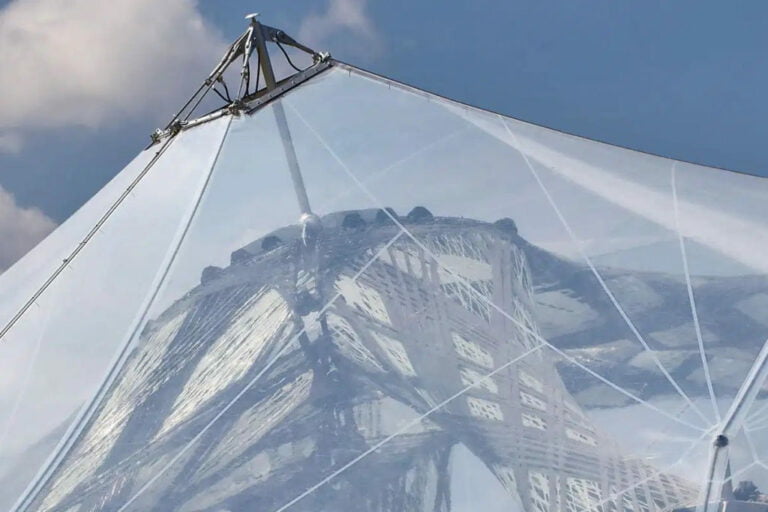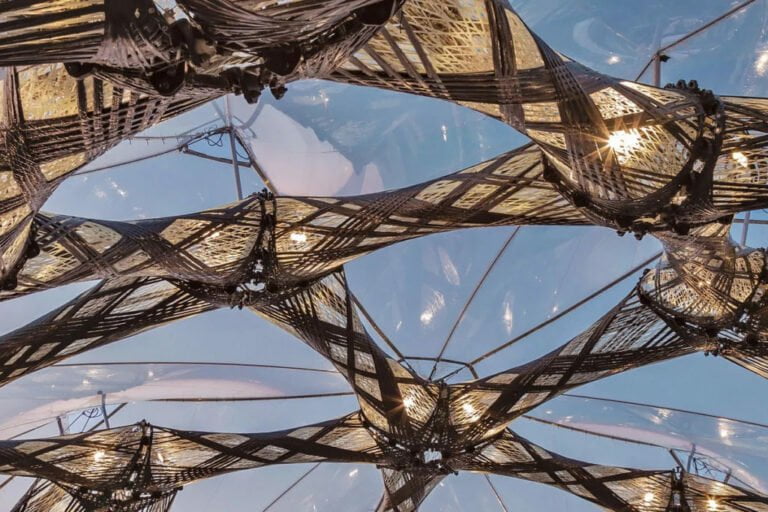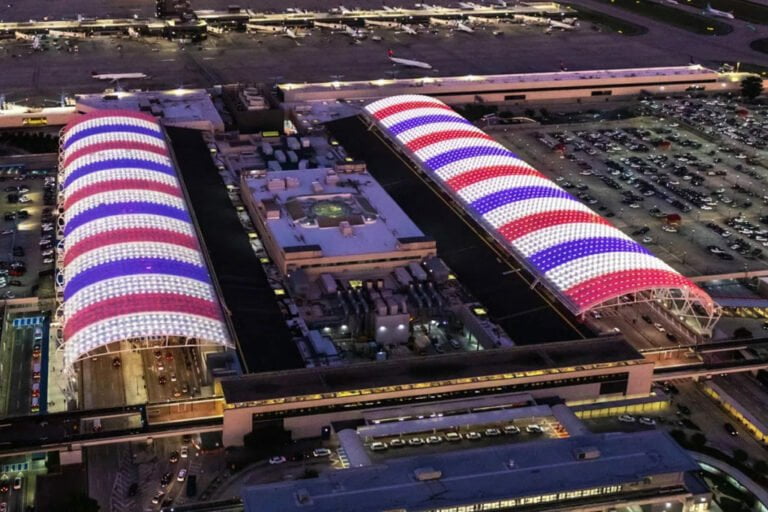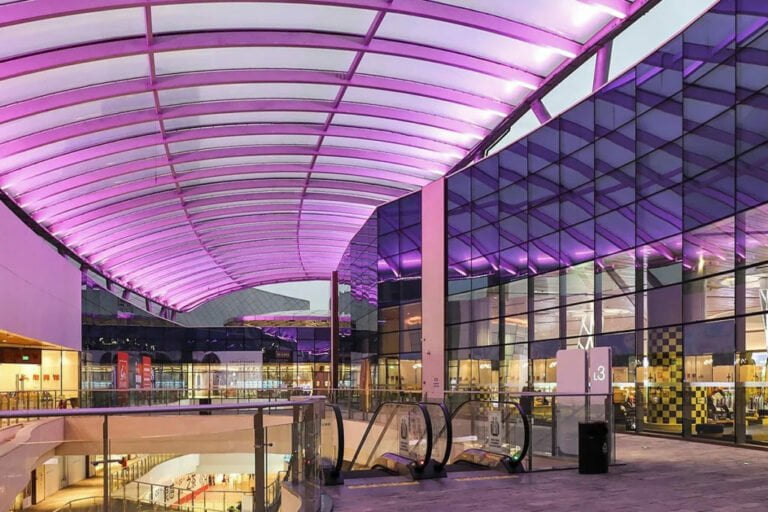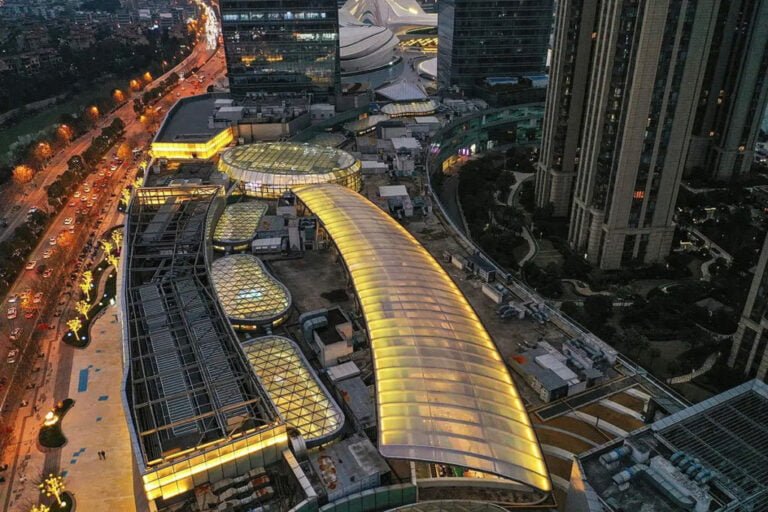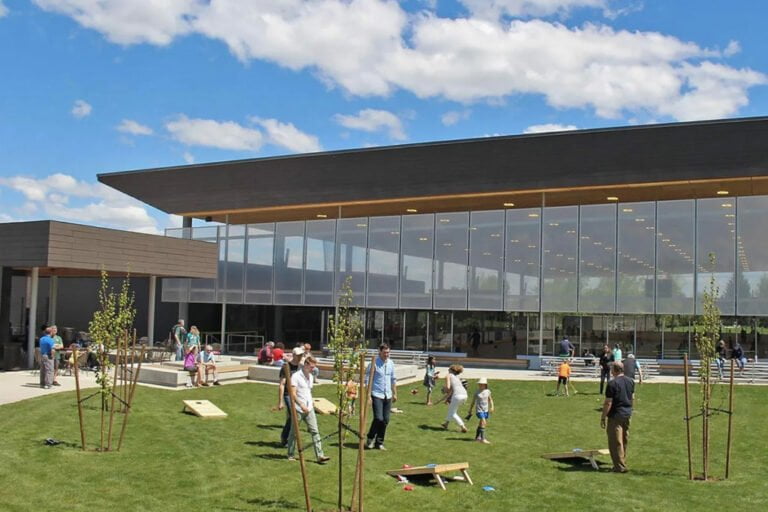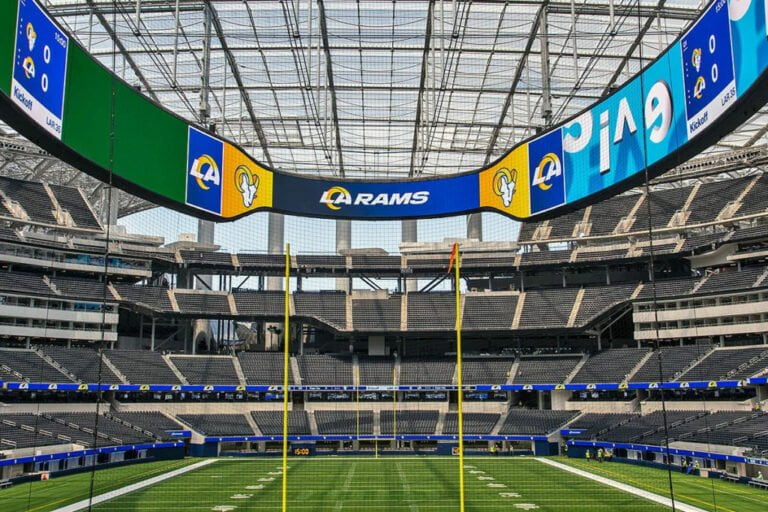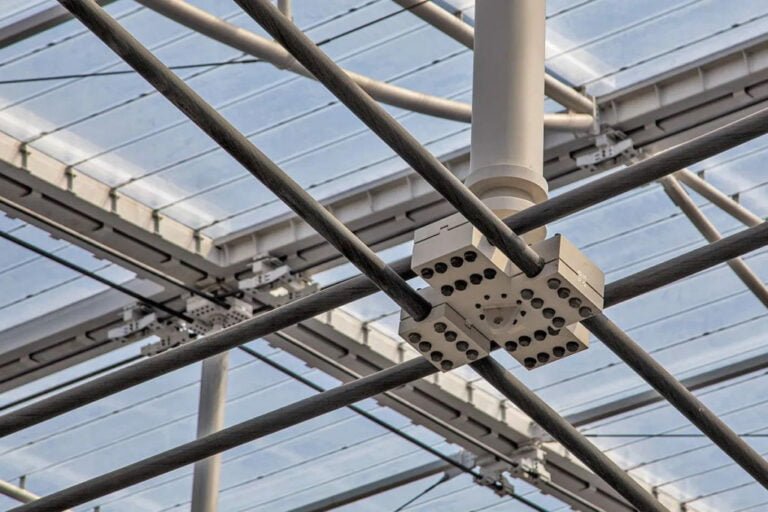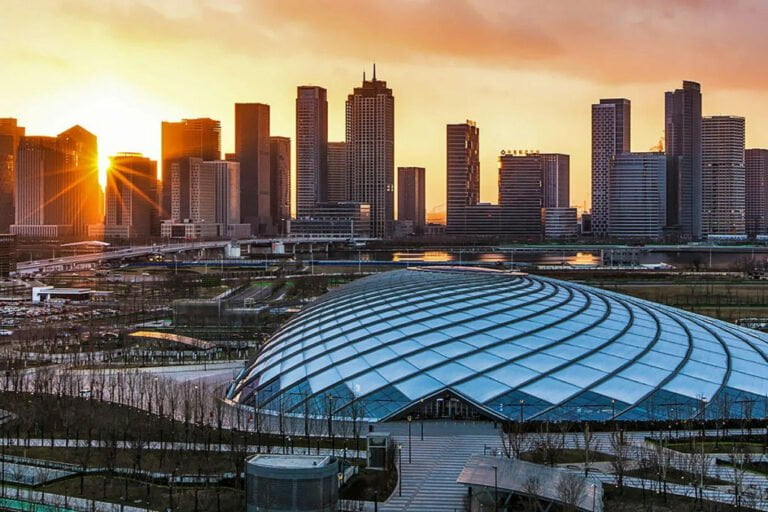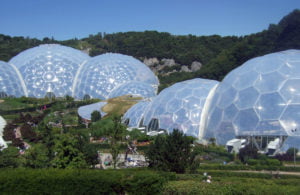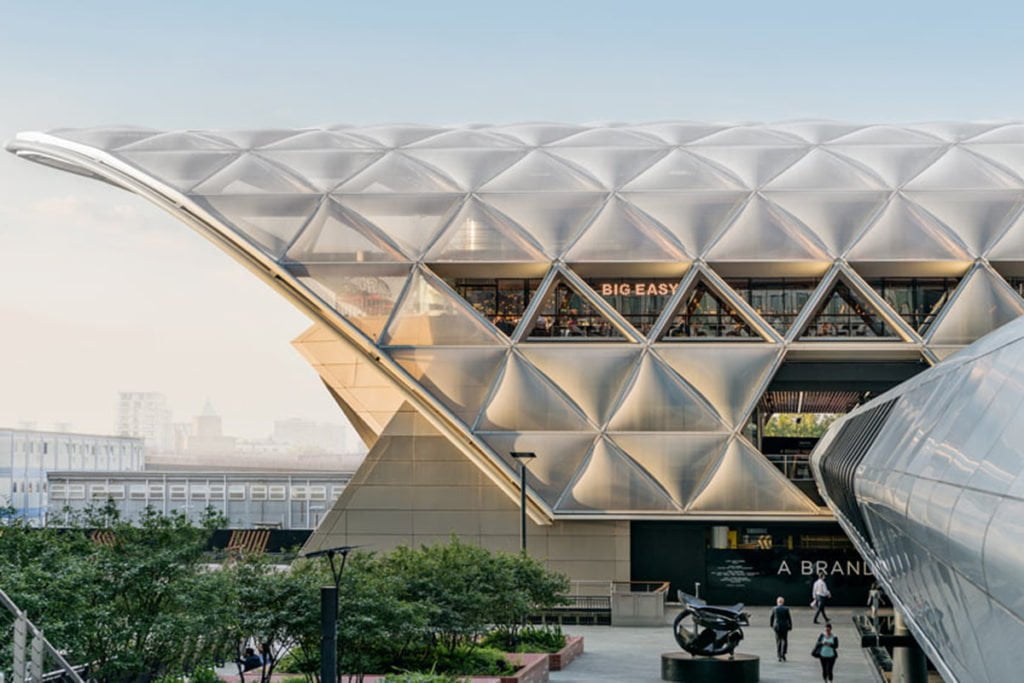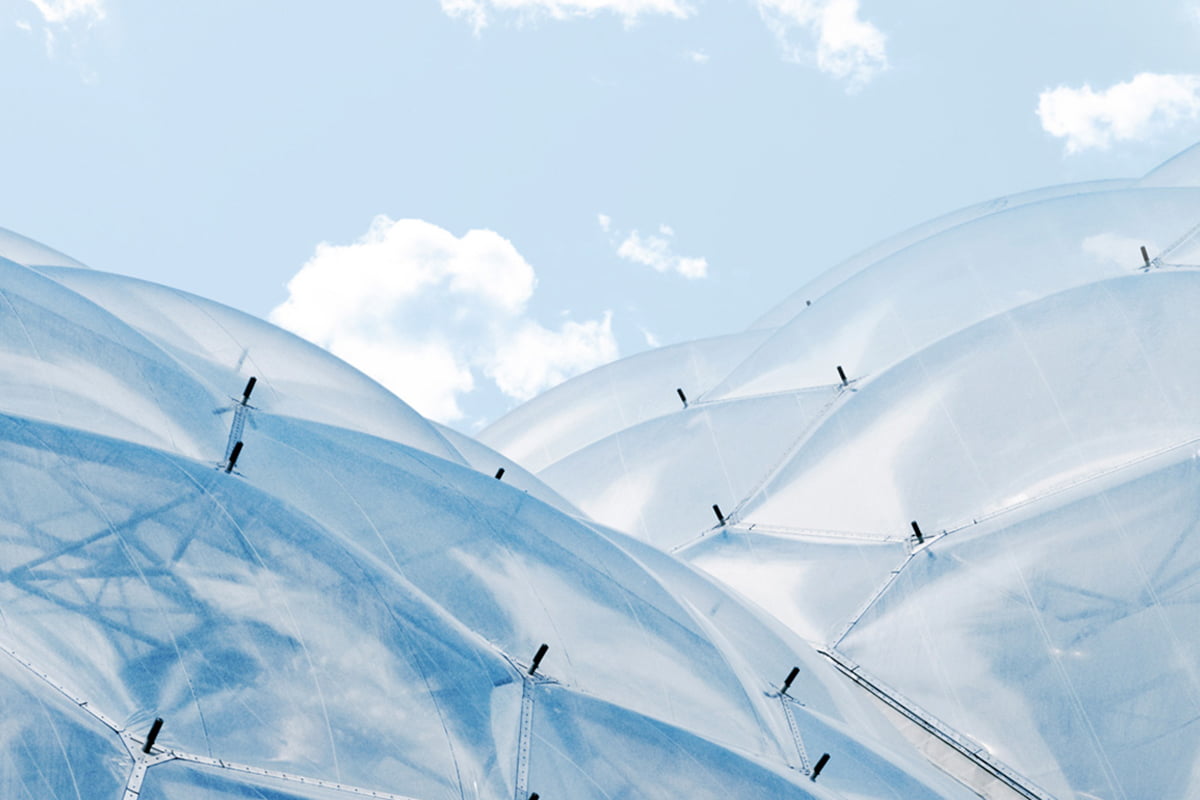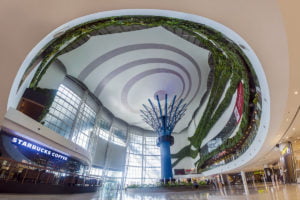What is ETFE material?
ETFE material was first developed in the 1970s by DuPont as a lightweight, heat-resistant material to serve as cover layers for the space industry.
In 2001, this material was first seen as an architectural material when applied to a large-scale project, the Eden Project - a nursery project with a dome structure in Cornwall, England. The design consulting unit at that time, Arup, chose ETFE material due to its ability to withstand external weather impacts and the transparent, light-penetrating feature of ETFE material for the interior vegetation system. .
In particular, the ETFE pattern printing technique can control the light area depending on the project's lighting needs. That is quite beneficial for some projects with the purpose of transmitting light in different climatic conditions.

What are ETFE material properties?
Unlike plastic materials that pose health risks such as PVC, ETFE has two superior properties: durability in harsh weather conditions and recycling. Using ETFE material to design and construct projects will save a lot of operating costs and energy in the process of creating materials and transporting them because it is very light. Thanks to its good elasticity, ETFE material works well even in natural disaster situations such as earthquakes and self-extinguishes if a fire occurs.
Besides, the surface of ETFE material is also very slippery, capable of preventing dust from sticking to the surface and cutting down on care and maintenance requirements. Thanks to that we can material type application This applies to roofing projects that need a long life such as schools, stadiums, buildings serving the sports industry, or projects that require high architectural features.
In addition, the ETFE pattern printing technique is also very advanced. The manufacturer has created many patterns to enrich the material and restrict light from entering as needed. In particular, if the volume of construction materials is large enough, the manufacturer can completely print ETFE patterns according to the project's specific requirements.
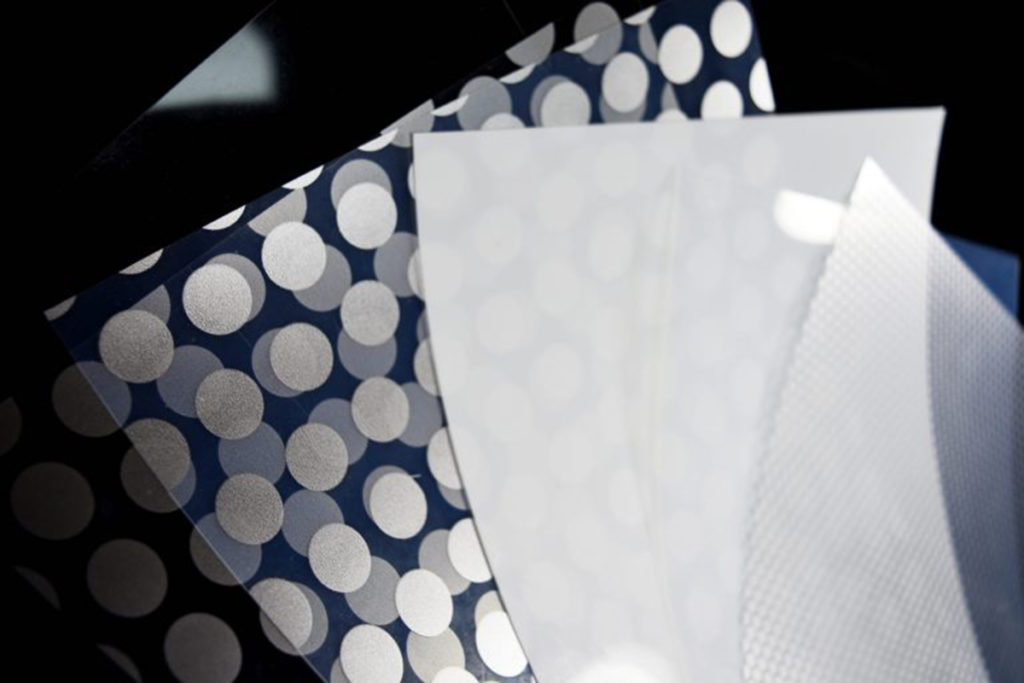

Why is it necessary to preserve ETFE materials?
Unlike traditional fabric structures, ETFE material is an injection molded material, thus has a smooth surface. This smoothness reduces the amount of dirt retained on the ETFE stretch canvas surface and allows rain to wash away most of the bird droppings and dirt.
Normally, manufacturers recommend that after 2 to 3 years, you should pay attention to cleaning to preserve ETFE, because if dirt accumulates for a long time, it will lead to damage. In particular, the air in big cities is more polluted than other locations, so it is necessary to pay attention to the preservation of ETFE more often.
To preserve ETFE well, ETFE awnings should be dusted on the underside, not too often – depending on the amount of dirt in the interior space, you will need to clean every 5-10 years and not Continuous cleaning is required.
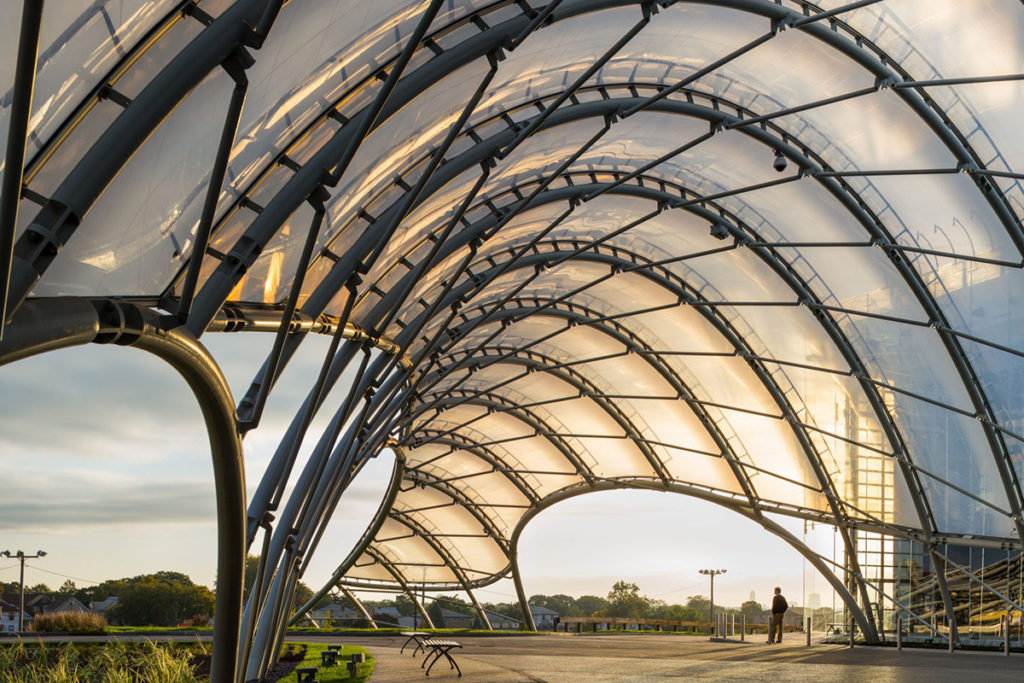
Steps in the process of preserving roofs made from ETFE material
Roofs made from single-layer ETFE will have a simpler and less frequent maintenance process than air-cushioned ETFE. Air buffers and air intakes need to be serviced approximately every 6 months to ensure they function as they should. An average EFTE preservation test follows these steps:
- Determine the factors that lead to the damage, coming from inside or outside the ETFE tarpaulin layer
- Determine the cause of deformation that is likely due to impact or a problem with the splint system
- Limit fixed factors
- Check the weld to ensure integrity
- Ventilation system and connections between joints, braces, brackets and connections, especially check for leaks.
- Check operation of air pumps, including replacement filters
- Fine-tune the operation of air pumps to maintain optimal performance
- Repair holes and tears.
Maintenance staff will perform all steps to secure ETFE using rope access techniques that comply with IRATA rules, to ensure safe storage of ETFE as well as access reach every position of the roof area.
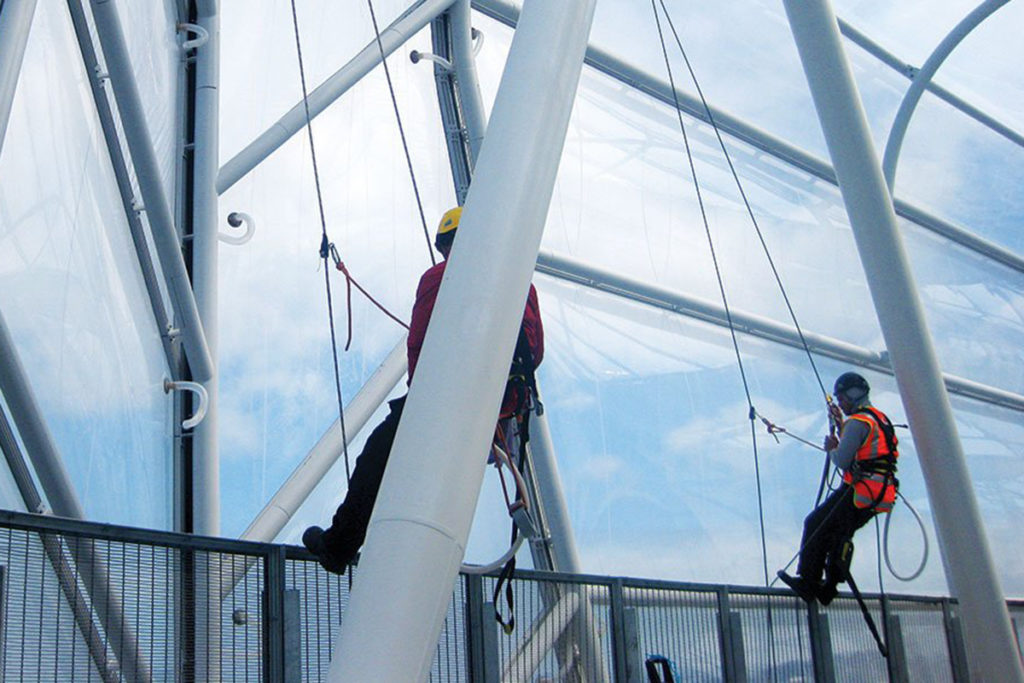
Introducing Flexiiform's ETFE design and construction service
In ETFE design and construction, ETFE roofs can be installed as a single-layer ETFE, supported by a cable mesh system, or commonly form a series of pneumatic cushions composed of two to five layers of treated Carefully crafted and supported by an aluminum brace.
In the case of air cushion ETFE roofs, they are kept continuously pressurized by a small air pump unit that maintains the pressure at approximately 220 Pa and gives the roof system a stable structure, while helping The roof has additional thermal insulation properties and creates an impressive architectural effect.
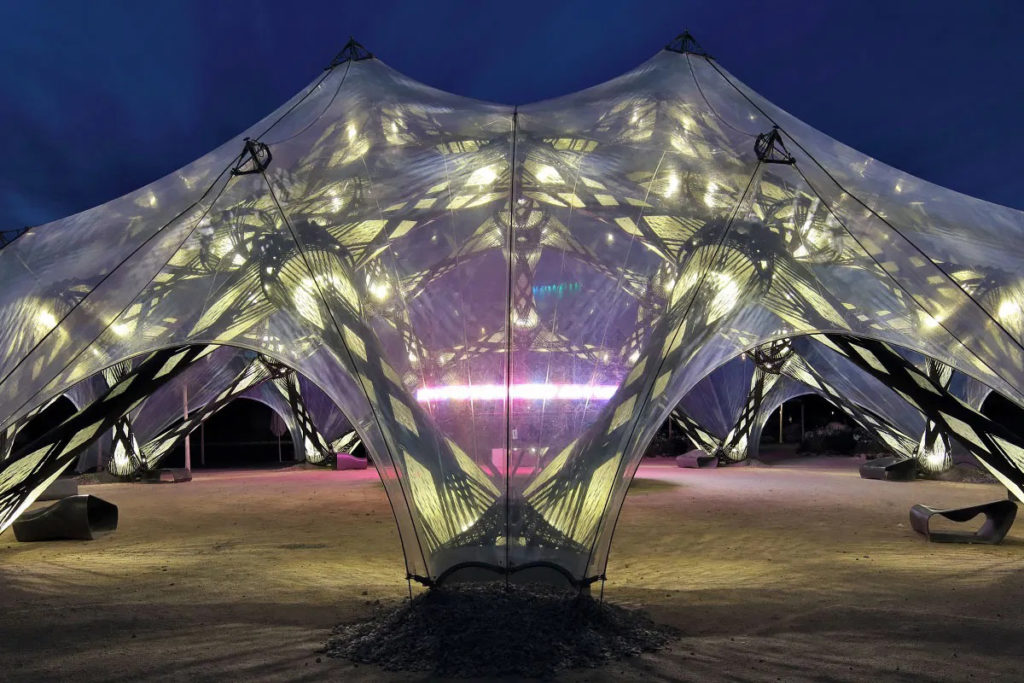
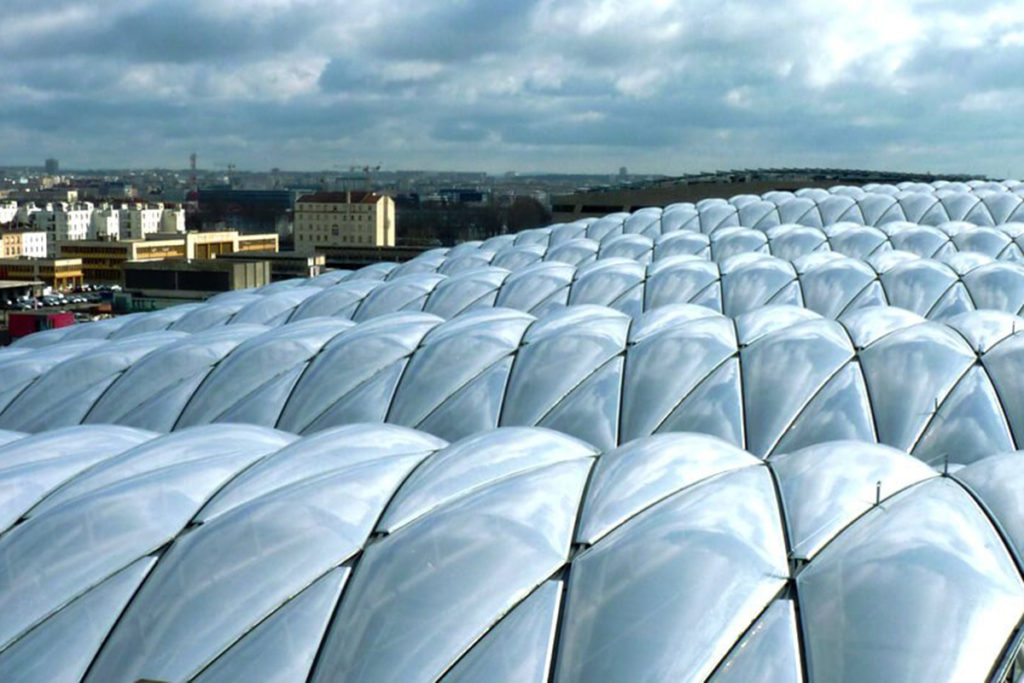
Thermal insulation parameters of ETFE material
In the design and construction of single-layer ETFE with a U-value of approximately 5.6 w/m 2 K, a standard three-layer pad can achieve a U-value of 1.96 w/mK, a thermal insulation value better than triple glazing when used horizontally (glass manufacturer's figures, calculated according to vertical glazing dimensions, greatly enhance the figures).
The air cushion insulation quality of an ETFE roof can also be improved by adding more layers of ETFE (up to five layers) or by coating the membrane with a specialized compound to enhance thermal insulation properties.
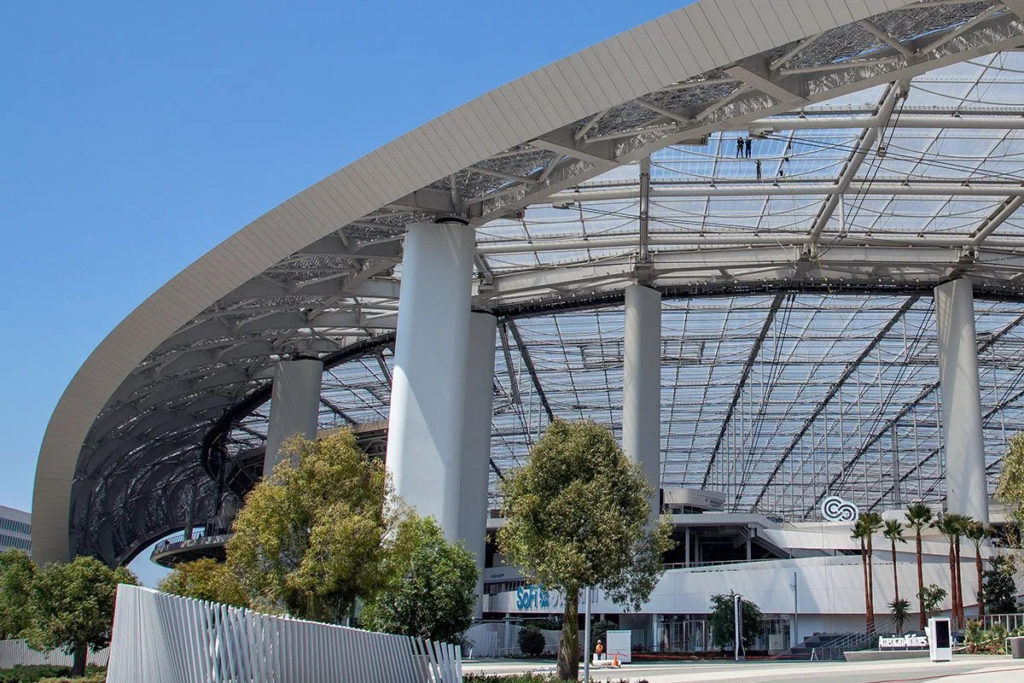
Transparency parameters in ETFE design and construction
ETFE material is famous for being as transparent as glass, capable of transmitting the entire light range when directly absorbed (380-780nm). A single-layer ETFE roof has a light transmittance of approximately 85% and a multi-layer ETFE will have a reduced light absorption.
ETFE material also has the ability to transmit ultraviolet rays (320- 380nm) very well (approximately 83-88%), so vegetation and plants under ETFE roofs can grow very strongly, for example, the project Eden Project in England. It is important to note that ETFE material also has the ability to absorb a large proportion of transmitted infrared light, which can be exploited to improve the electrical energy consumption of buildings. .

Technique of printing ETFE patterns and dyeing the material to limit light transmission
Although a transparent material, ETFE roofs can be processed in a number of different ways to properly utilize its light transmission properties. Ways include:
Printing techniques in ETFE design and construction: The surface of the membrane is coated with various patterns to reduce solar gain while maintaining the transparency of the material. By varying the coverage ratio and density of the pattern, the light energy conductivity can be changed.
In addition, in the design and construction of ETFE, some printing methods can affect the light transmission properties. The manufacturer has provided more than 20 standard ETFE pattern printing models to not only ensure light transmission properties but also control their light transmission level. Besides, they also provide custom-designed samples for an additional fee or free of charge if the required volume is reached for production.
Dye the material: ETFE materials are also available in a range of basic colors, although fewer than other materials.
ETFE surface treatment: Surface treatments performed during manufacturing can change the properties of films and allow them to control light transmission. These methods make the material translucent and thereby create a backdrop with a light-reflective surface, suitable for event-related projects.
Radiation in ETFE design and construction: ETFE material has been through a series of radiation treatments, reducing the level of infrared and ultraviolet rays transmitted through the film layer.
The design and construction of multi-layer ETFE (or air cushion ETFE) also allows for the control of light and solar energy transmission. Multi-layer cushions can be composed of multiple single-layer ETFE (up to 5 layers) with different patterns.
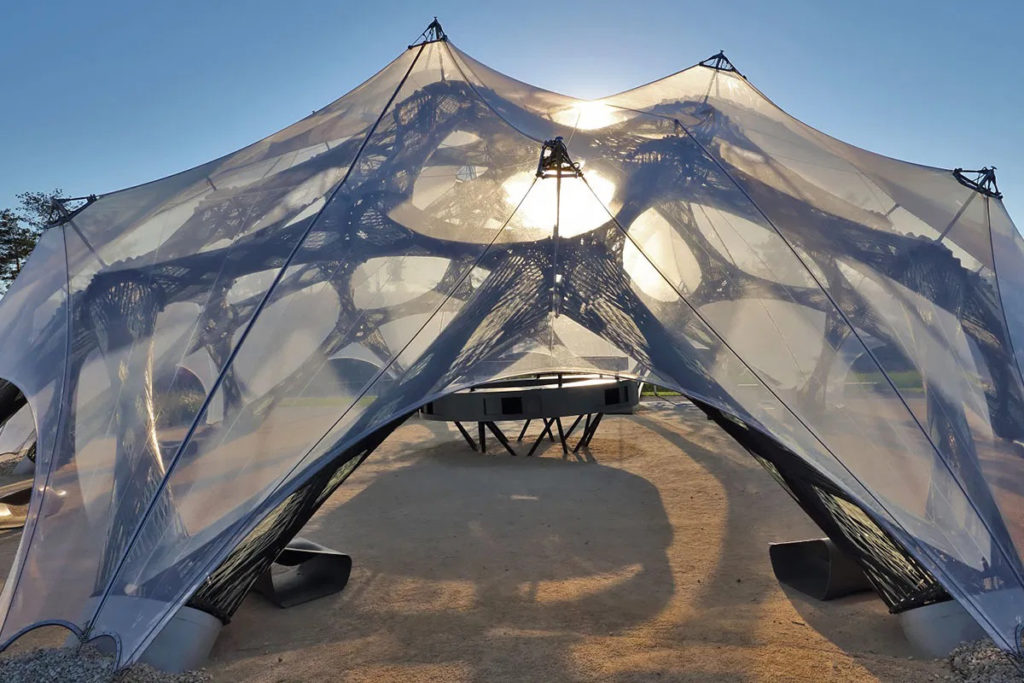
G value in ETFE design and construction
The G value in etfe design and construction reflects the rate of solar energy transmission through the glass. This is usually expressed as a percentage or value between 0 & 1; The higher the number, the more energy is transmitted through the glass and the more the building will heat up.
The G-value of an etfe roof can be reduced to as little as 0.48 for a 2-layer system with a fritted top surface and as low as 0.35 for a 3-layer system. For comparison, standard glass is approximately 0.88 while some specially treated glass can be as low as 0.46.
It should be noted that the G-value of any etfe roof installation is highly dependent on shape and location, and must be calculated on a project basis taking these factors into account.
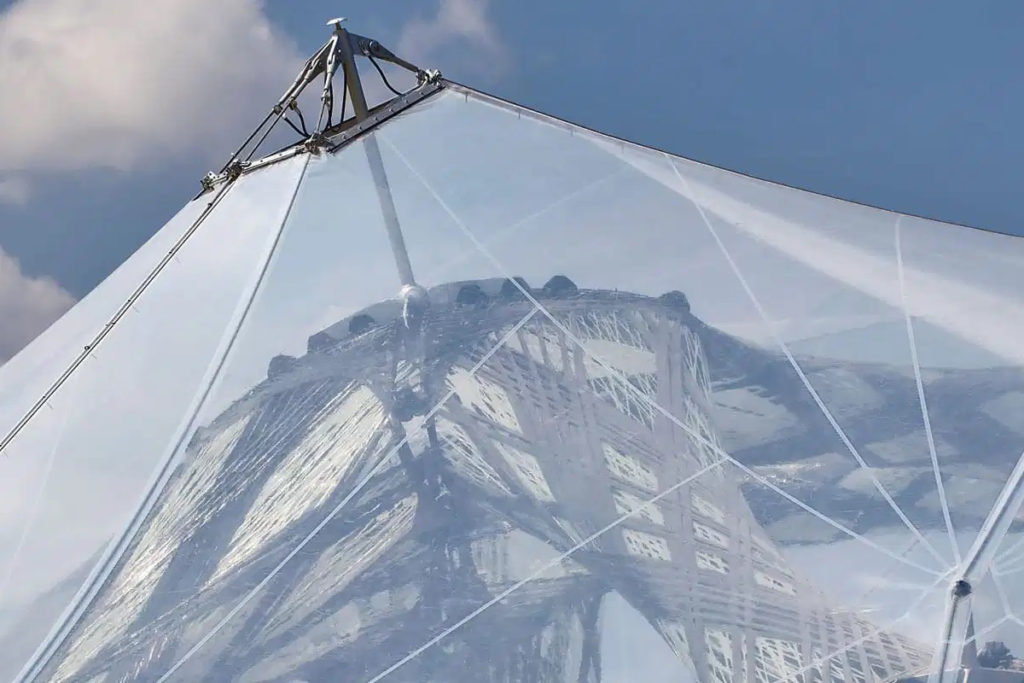
Durability of ETFE material
Material longevity is always a concern in the design and construction of ETFE because it strongly absorbs UV light, atmospheric pollution and other forms of environmental weathering.
This material has been extensively researched and tested in laboratory and field environments. It was concluded that no deterioration or strain loss occurred and there was no indication that the material would become brittle or discolored over time.
Therefore, specialized units in the industry predict that this material has a lifespan exceeding 50 years. However, in reality, there is still no ETFE project that has been maintained long enough to truly verify its life cycle.
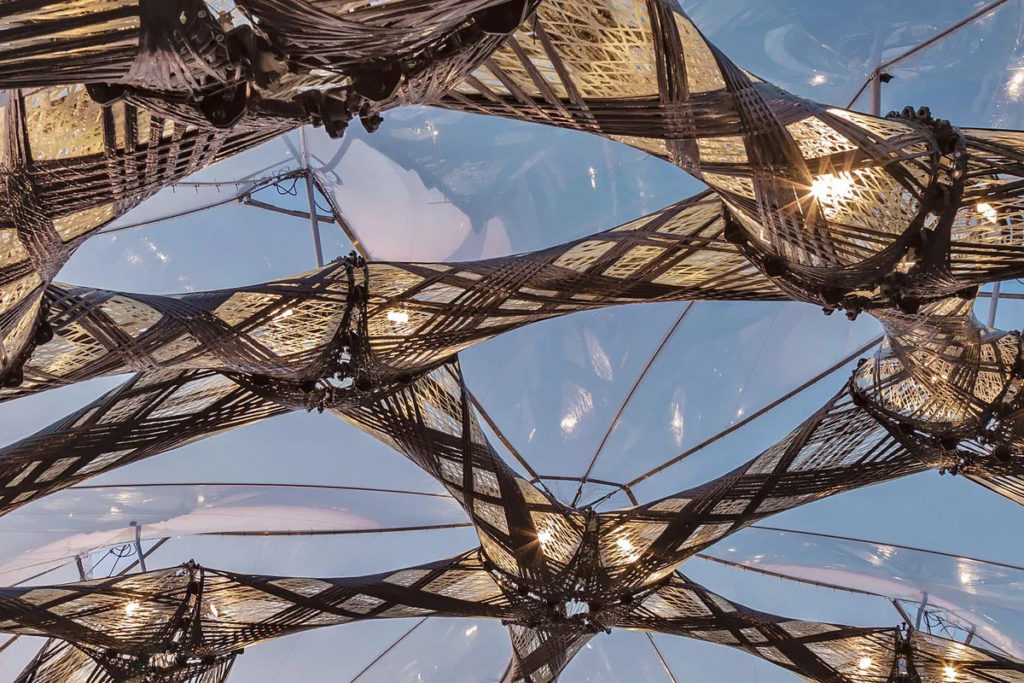
Air pumping equipment in design and construction of Etfe
The etfe roof cushioning systems are continuously inflated by the air handling unit where air ducts run to each individual cushion. Since the mattress only needs to maintain pressure and does not create airflow, the energy consumption used by this device is minimal. An entire roof typically requires only a single air handler containing 2 fans powered by electric motors. For larger scale installations, it is sometimes necessary to install additional air handling units.
The fans run alternately to maintain pressure in the cushions, with only one fan running continuously at any time. In the event of pad failure, due to adverse weather conditions or reduced pad pressure, both fans will run simultaneously to maintain stable pressure.
If required, compressed air units are also equipped with dehumidifiers to dry the air before it is introduced into the mattress.
A typical air pump unit measures 1.2m x 1.2m x 0.9m and is located close to the etfe roof seal system, either internally or externally. The system requires a dedicated and secure power supply including two 240V 13amp electrical connections as the etfe roof is a living system, the cushion is permanently linked to the air pump to ensure pressure is maintained .

Control system in design and construction of Etfe
Roof standards in etfe design and construction will be provided along with a modern performance monitoring system. This continuously provides real-time information on pressure in the mattress, local weather conditions, temperature and humidity and any errors or changes in system operation with a local LCD display ( see picture).
During ETFE design and construction, the material supplier (or designated user) can access the remote control system, update support or off-site diagnostics to assist with fault finding and may allow for small pressure and performance adjustments.
In etfe design and construction, continuous monitoring allows the system to automatically adapt to avoid potential problems. In the event of a failure, the control system will automatically attempt to compensate for the error; for example, when a pressure drop occurs, the air flow rate to the cushion automatically increases.
Additionally, in the design and construction of the ETFE, errors are recorded and displayed on the main controller and associated air handlers (using the signaling system described below) and are also available. can send automatic alert notifications to pre-specified users. An alarm will be raised as soon as an error is recorded.
To enable simplified diagnostics, maintenance personnel can check the colored signal lights on the front of the air handler. The display states of the signal lights are as follows:
- Blue: works well
- 2-color light (blue and small part amber): needs attention (e.g. air filter partially blocked)
- Red: need immediate alarm.
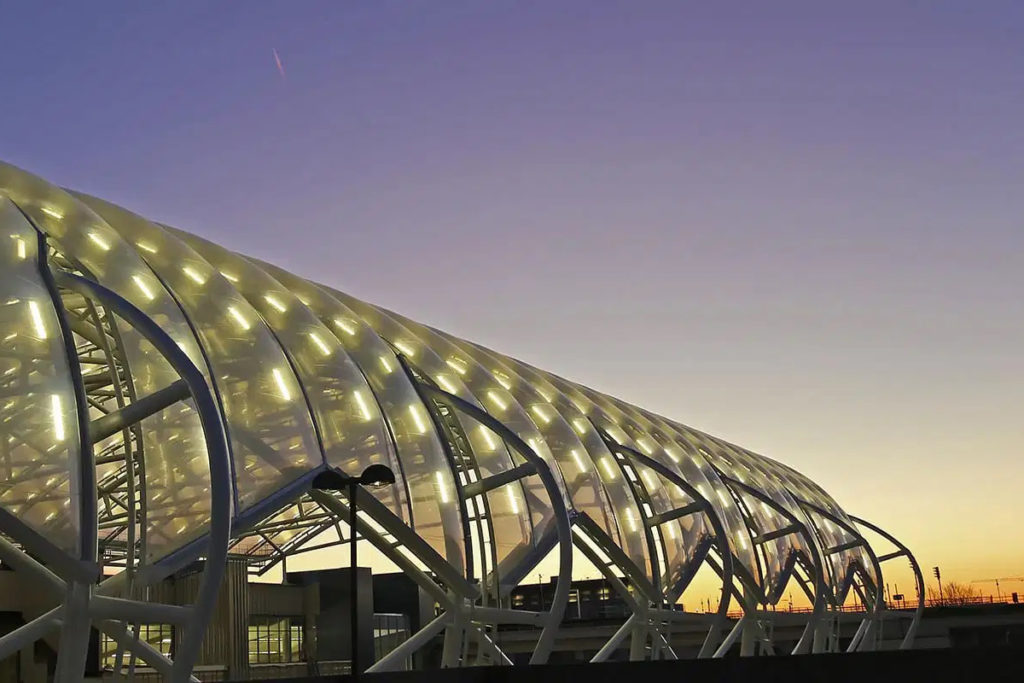
In case of power outage after Etfe design and construction
In the event of a power outage, the design and construction of the etfe roof sealing system will maintain pressure for approximately 3 to 6 hours before deflating (depending on weather conditions). This is due to the one-way valve devices installed in the air pumping equipment. After this time, it is likely that, as the pressure drops, the roof will become damaged. Therefore, users should have a backup generator or a cable bracing system installed to support the cushion if this situation arises.
In addition, we always recommend that the roof be closely monitored to avoid predictable problems from occurring.
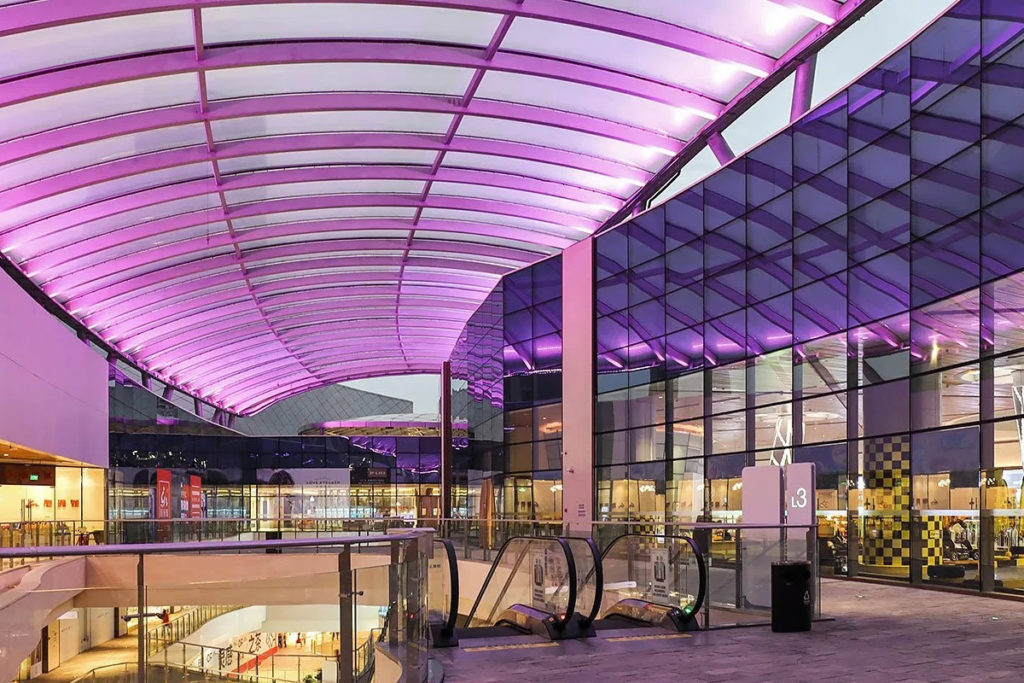
Advantages of using ETFE material for environments that require fire and explosion safety
As a flexible material, the design and construction of ETFE can withstand very high loads in a short period of time, making it the ideal material for use in high-explosive areas. If installed in a vulnerable environment, ETFE material is also an advantage because the cushion will not break or fall out of the frame if damaged.
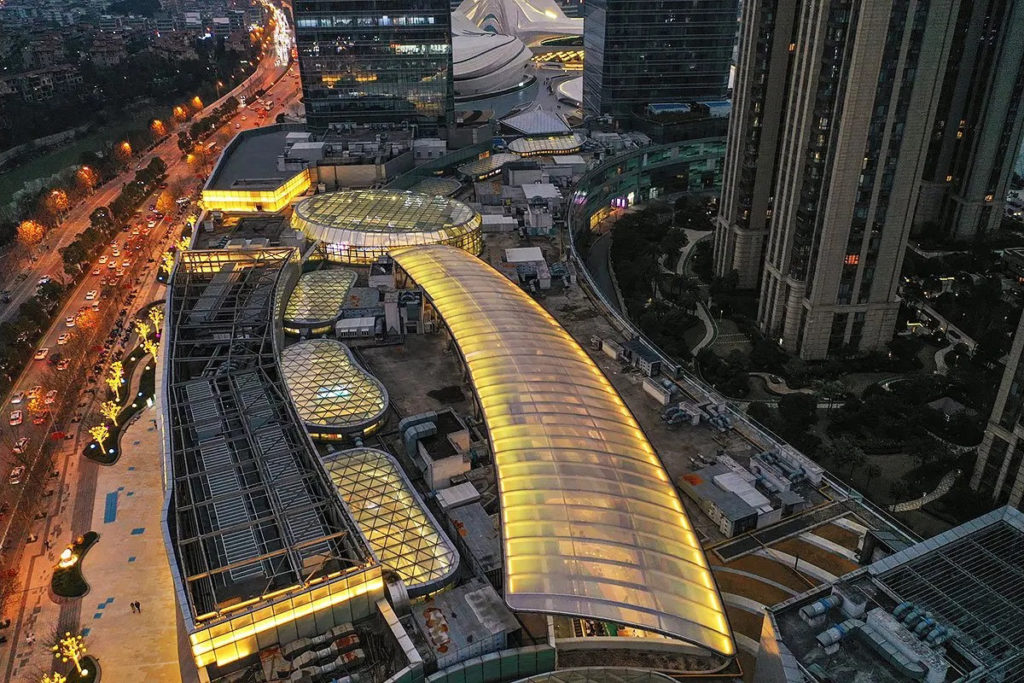
Repair and replacement after Etfe design and construction
One of the outstanding features of etfe design and construction is its exceptional tear resistance, but it is still difficult to avoid scratches and cracks from stress forces. But once any cuts or scratches appear, with normal fabric materials it will spread the tears further, but with etfe roofs, they will quickly expand and round into a hole with a radius of minimum, dissipating loads and preventing further tearing.
Minor repairs in etfe design and construction, such as punctures, can be made on-site and in a relatively short period of time using an etfe roof. For etfe roofs with fritted printing, a similar printing material will be used so that the repair does not affect the aesthetics of the structure.
If the etfe air cushion design and construction is more significantly compromised, an individual cushion set can easily be removed and replaced with minimal disruption to the overall installation. The external surface of the etfe roof cushion can be accessed by technicians, using rope access techniques, from support provided by the main steel structure. This requires ropes to be strong, made from steel and must be carried out regularly according to IRATA guidelines.
If a problem occurs with the control system, it can be diagnosed remotely. Once the problem is identified, it can be fixed in one of two ways: Remote repair (software issue). At ground level (hardware problem). If on-site repairs are needed, the engineering team will simply access the building control room to resolve the issue.
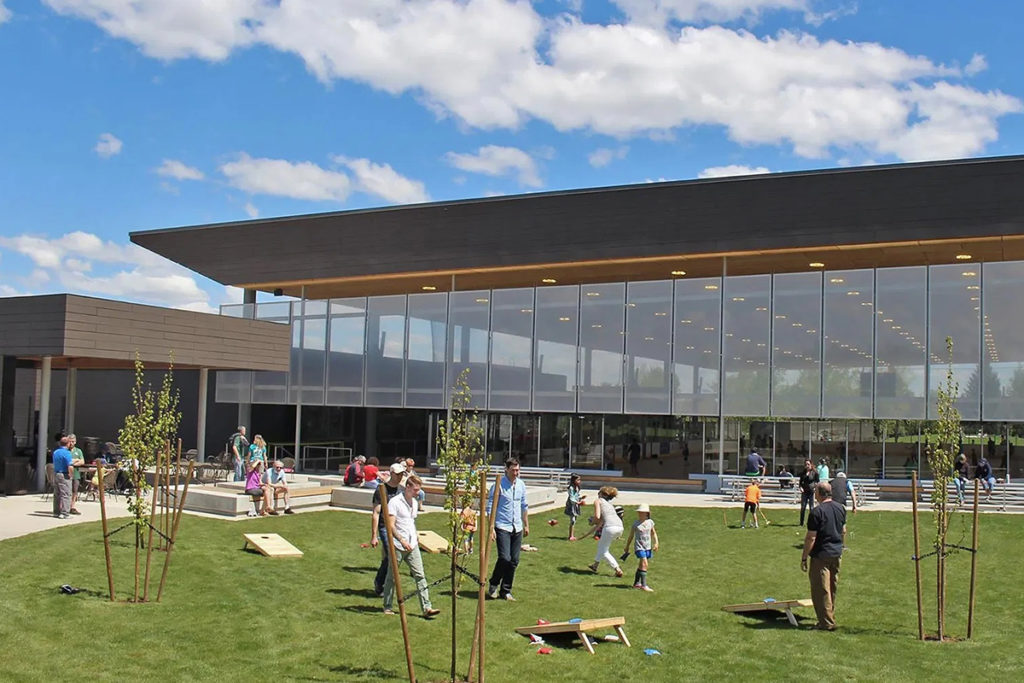
The problem affects the design and construction of Etfe
Birds are the biggest threat to common mattress problems; Excessive bird pecking can cause small punctures in the etfe roof pad. Overall, this poses no threat to the stability of the overall seal as the etfe roof seal system is provided with active monitoring that automatically adjusts to compensate for slight drops in pressure.
As a precaution, all etfe roof structures are fitted with bird-stopping cable systems to prevent birds from perching on the aluminum/steel structural frames.
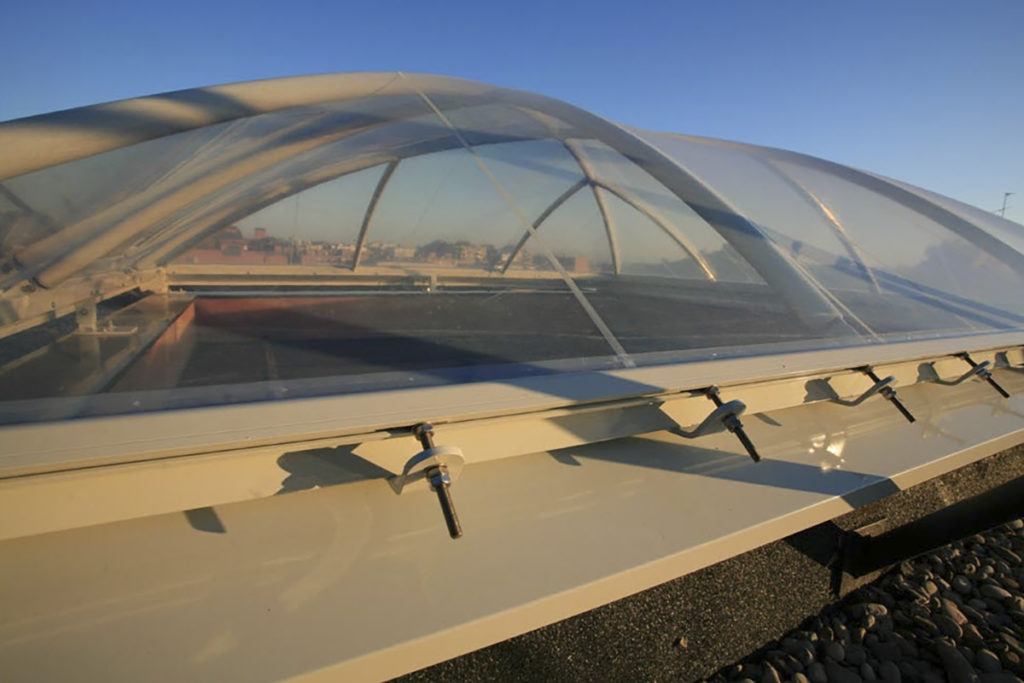
Flammability in design and construction of Etfe
Etfe roof is a material with low flammability (270oC) and is capable of self-extinguishing. In the event of a fire, hot smoke will cause the membrane to soften, deteriorate and then shrink away from the fire source to create natural ventilation. The amount of material used in the roof does not matter in this situation, an etfe roof will not produce molten droplets or any amount of smoke.
ETFE design and construction materials have been comprehensively tested. Here is a selection of the fire results:
- DIN 4102: standard B1
- EN 13501-1: standard B-s1, d0
- NFP 92-505: M2
- NFPA: 701
In some cases, there is no guarantee that heavy smoke will reach the etfe roof seal and the heat from the smoke will cause the seal to fail, so it is worth considering installing automatic actuators. move to clear the space of smoke.

ETFE design and construction is very environmentally friendly
Raw materials incorporating socksETFE is a class II substance recognized under the Montral treaty. Unlike its Class I counterpart, it causes minimal damage to the ozone layer, as is the case with all materials used in its production.
The design and construction of ETFE can be easily recycled, but due to its properties (not degrading under UV light, sunlight, weather, pollution) it has a very long lifespan, estimated over 50 years, causing low recycling demand. Excess material from the mattress manufacturing process can be efficiently recycled by all ETFE suppliers. Aluminum frames require a high level of energy to produce, but they also have a long lifespan, making them easily recyclable at the end of their lifespan.
Because it is a lightweight material, transporting ETFE material is much easier because it can be rolled up, taking up less space, thus saving more transportation equipment.
Cleaning and maintaining the material also uses little chemicals, has little impact on the environment, most of the time water will wash away any dirt, this is due to the smoothness and non-stick properties of the material. If cleaning is necessary, just use a detergent with a mild PH level and will limit the impact to the environment to a minimum.
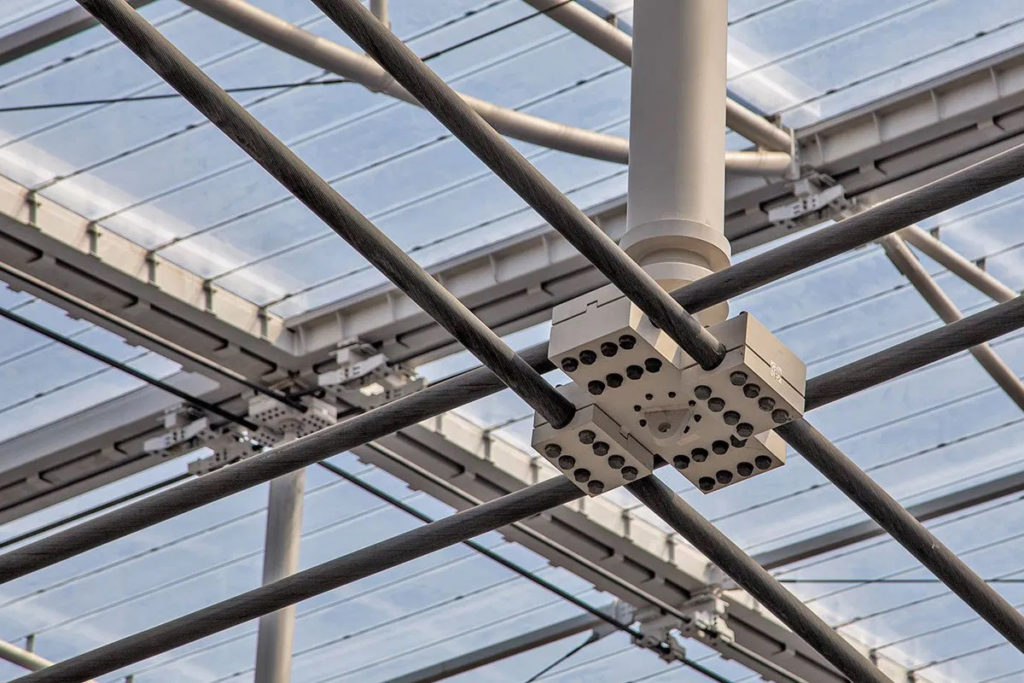
Drainage factors in the design and construction of Etfe
All structures in the etfe design and construction are designed with curvature to ensure that rainwater does not stagnate or become trapped on the top of the membrane as this leads to deformation of the membrane structure. Rainwater will be directed to the edge of the roof to drain centrally into the main gutter system.
Gutters are not supplied as standard in most installations when designing and constructing ETFE but they can be incorporated if required.

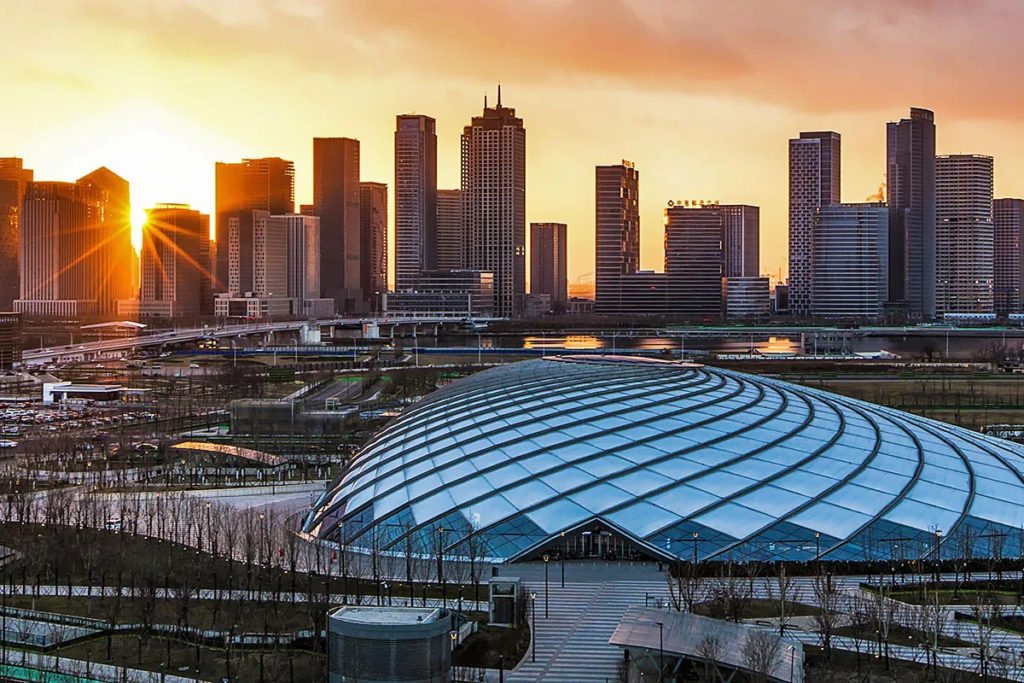
Flexiiform is a company that designs and constructs professional Tensile Fabric roofing services in Vietnam. We are proud to be the only unit in Vietnam to receive expert advice from the Company Fastech – The leading company designing and constructing stretch canvas roofs in Thailand.
With a team of Architects and Engineers who are professionally trained and skilled, along with the strength of creative ideas in designing cover solutions from high-quality canvas structures to suit every project. process and need to use structures related to ETFE material, or need a light-reflecting material to optimally replace glass

